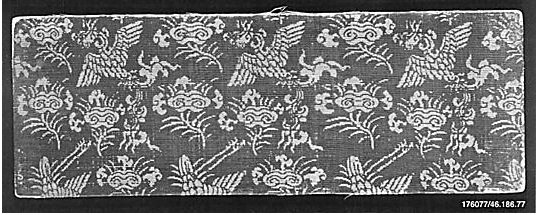Here we have a piece of fabric dating from the Ming Dynasty in the collection of the Metropolitan Museum of Art. Here you can see stylized phoenixes and ruyi, the scepter based on lingzhi, the herb of immortality, that oval organic form that looks like it is folded in on itself.
This is a scepter auctioned off by Christies. It is a ruyi, and thus is associated with immortality, good luck and power. This shape can appear in many aspects of Chinese art, including Mahjong.
The box above was auctioned off by Kaminski Auctioneers. Its handle is shaped like a ruyi. The set was owned by Marla Maples, the former wife of Donald Trump. It is now part of a major private Mahjong collection.
This exquisite dragon Mahjong box also features ruyi, certainly toward the lower left and right center, but probably above, hiding part of the right side of the dragon as well.





Tony
I'd often wondered about those strange shaped handles on the top-end wooden boxes; it always seemed to be a weird thing to do. But now you explain the rationale, it all becomes clear! Thanks for that piece of enlightenment.